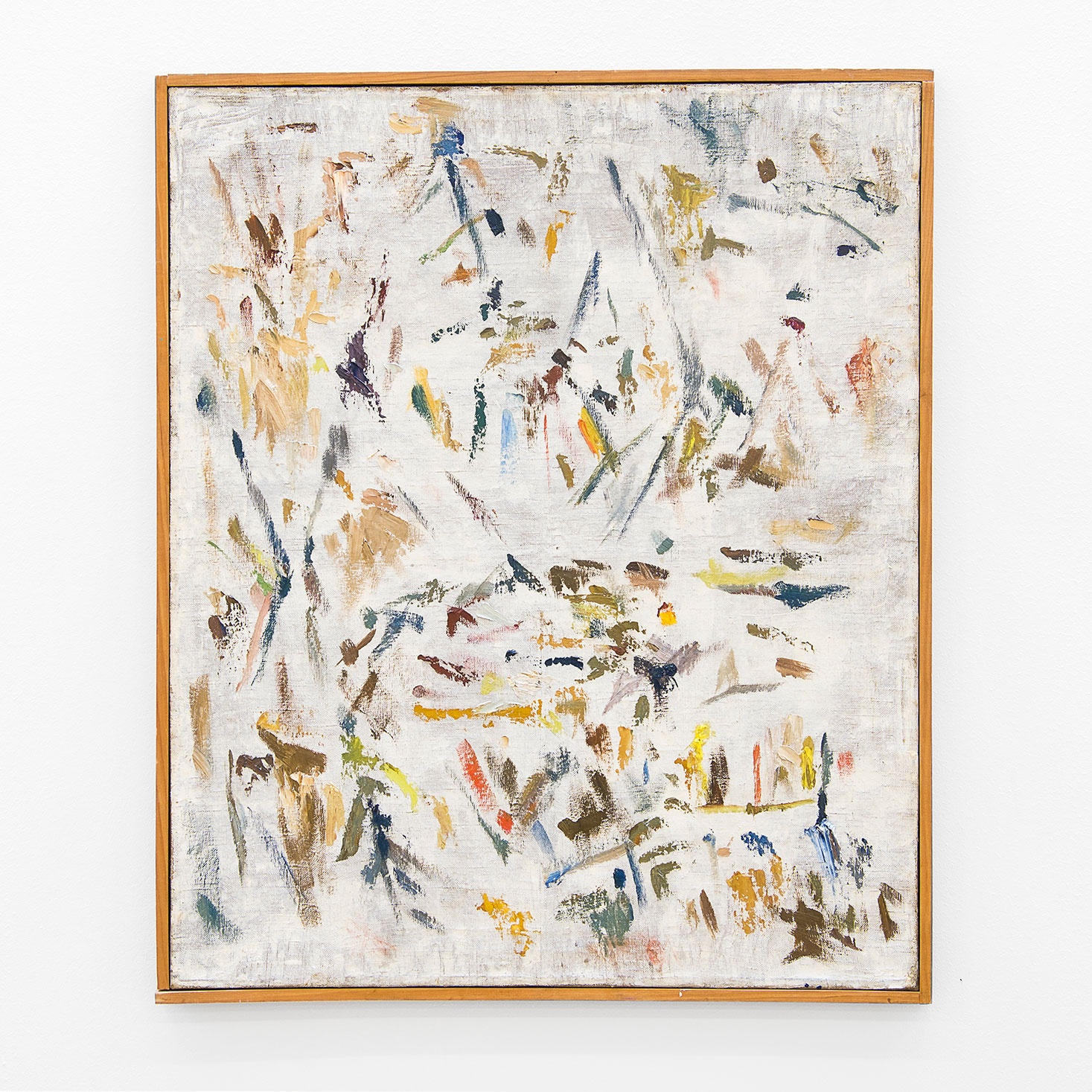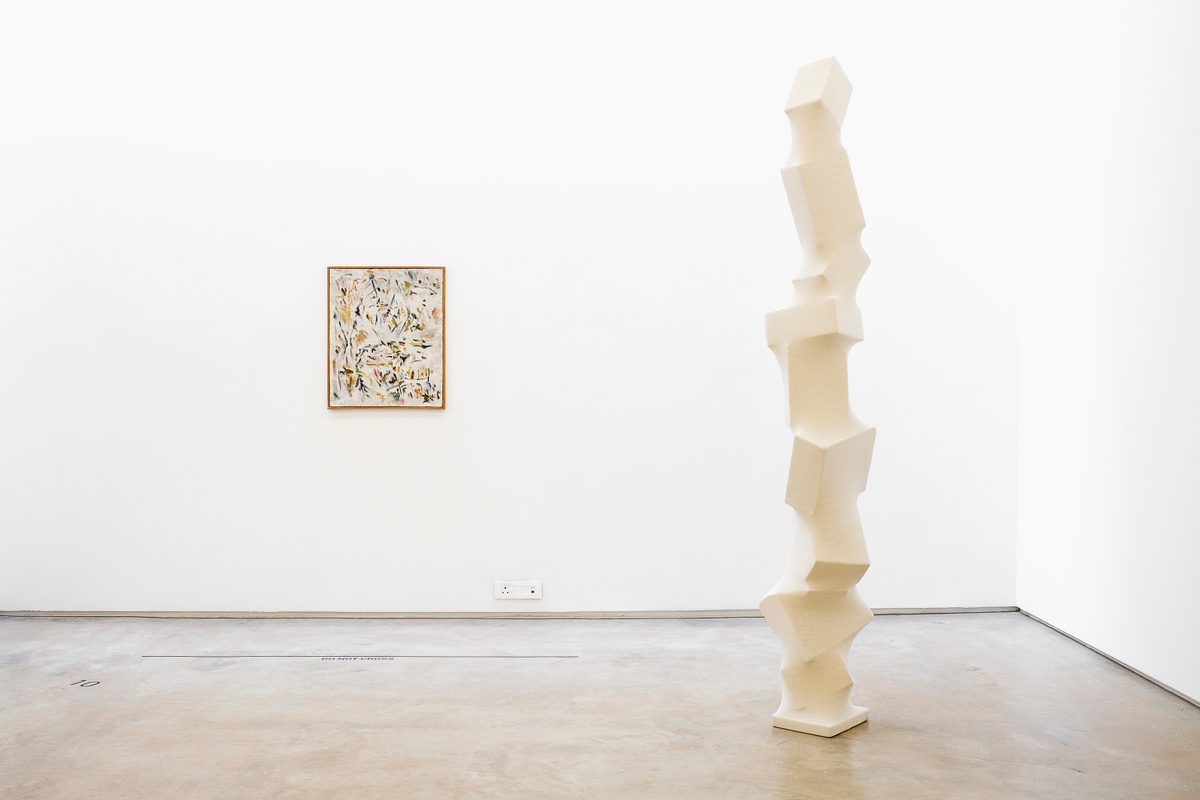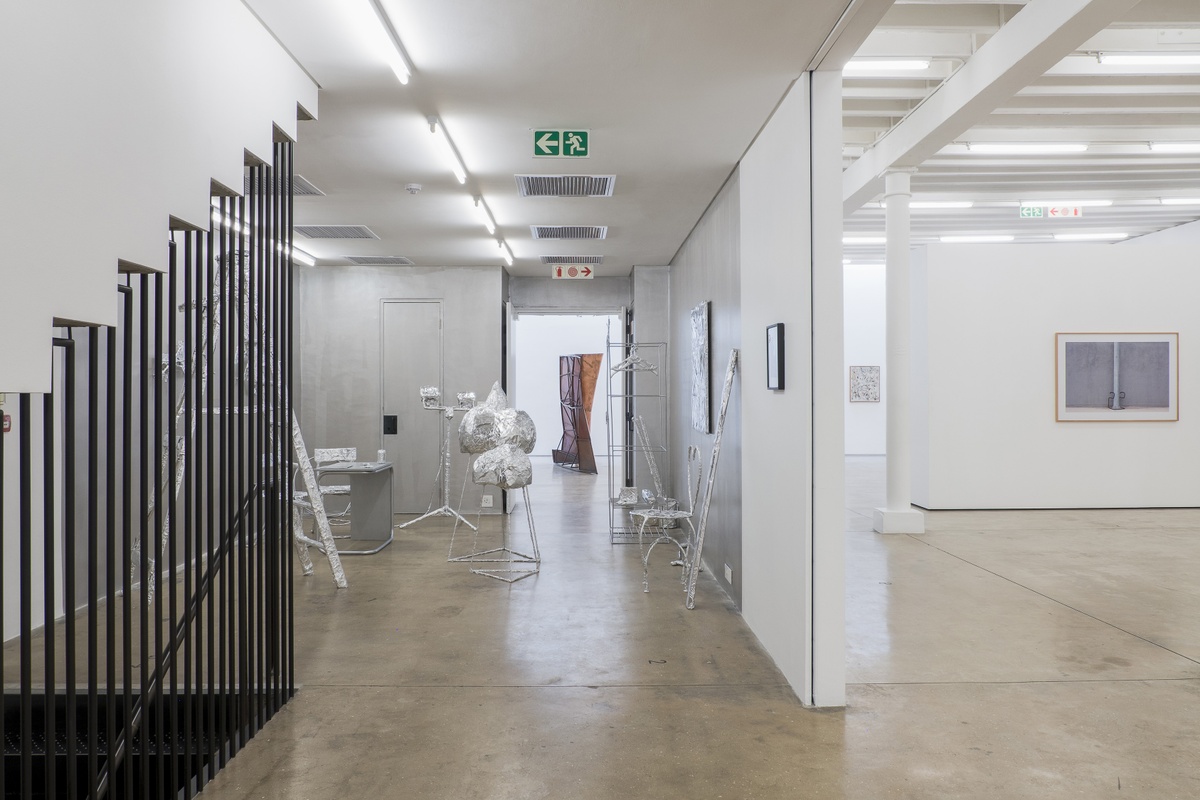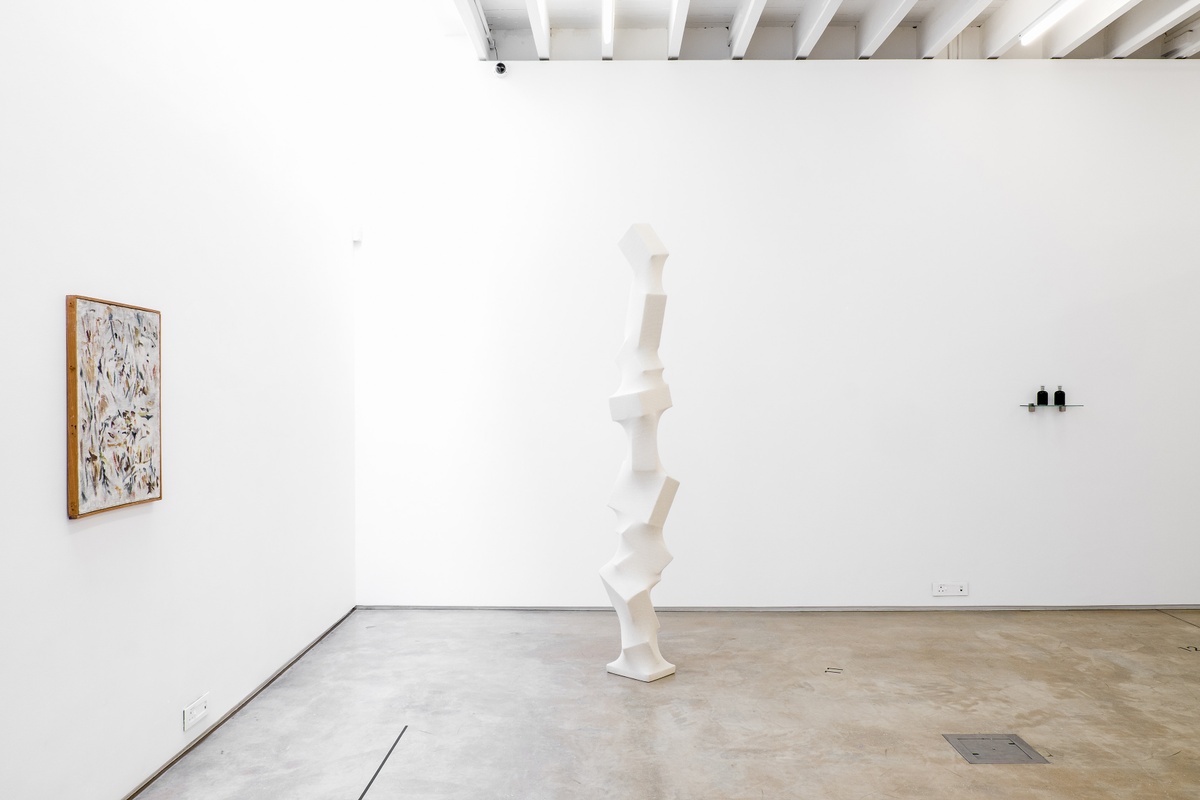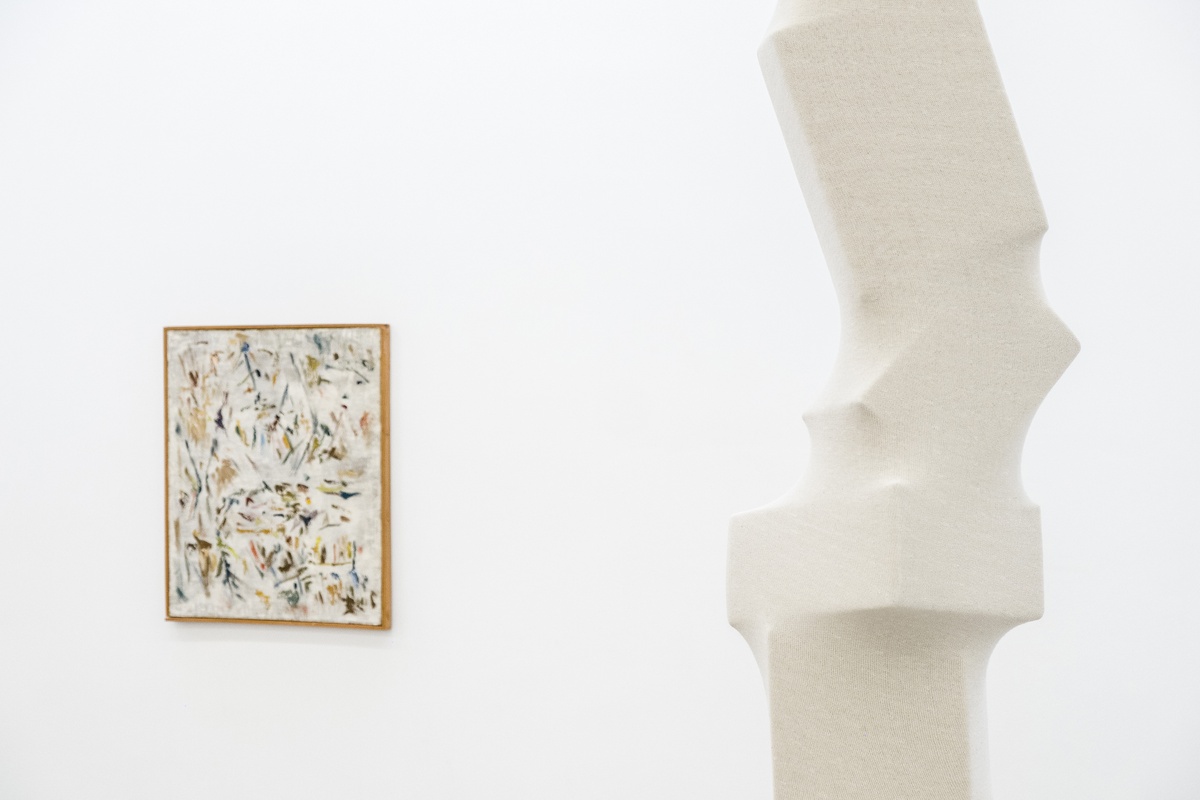Ernest Mancoba
After arriving in Paris in the late 1930s, Mancoba abandoned naturalistic figuration in the pursuit of a more ‘universal’ art language. Among his deepest concerns was the articulation of the unsaid, appealing to the subconscious, and the invocation of a spiritual unity. He looked to the indigenous art of places unfamiliar to him, such as Oceania and South America, to trace shared themes in form and content. Mancoba, however, resisted the designation of Primitivist, suggesting instead that “the first condition for entering the world of the spiritual expression we call art is to be open to the Other, even to the ultimate Other, whoever he be, with the knowledge, so well condensed by Arthur Rimbaud in his famous phrase: ‘Je est un autre’ (I is somebody else).” This pursuit of universalism later led Mancoba to the minimalist abstraction with which Untitled was painted.
b.1904, Turffontein; d.2002, Clamart
In death, Ernest Mancoba has found more critical attention and acknowledgement than he did in life. He has been granted, in absentia, such significant titles as "the first South African modernist" and "the first black modernist". In 1938, Mancoba left segregated South Africa to live in France, where he met his wife, the Danish artist Sonja Ferlov, and joined the avant-garde CoBrA collective. His preoccupations, however, never entirely aligned with those of his European counterparts. Throughout his career, Mancoba resisted category: his paintings and drawings were never entirely abstract nor entirely figurative, were at times minimalist and spare, at others dense and overworked. To his detractors, the artist’s work was neither Western enough nor African enough. Such dichotomies, however, were of little interest to Mancoba, who pursued a more utopian expression of art. The ideal would be, he wrote, “not to please the eye or the senses but to use art as a means, as a language to express feelings and ideas in relation to the present, the future and the past, to discover new concepts by which to regard the world for the salvation of man.”
